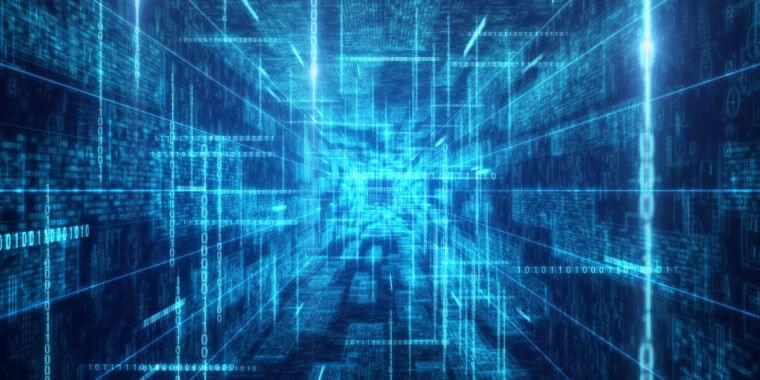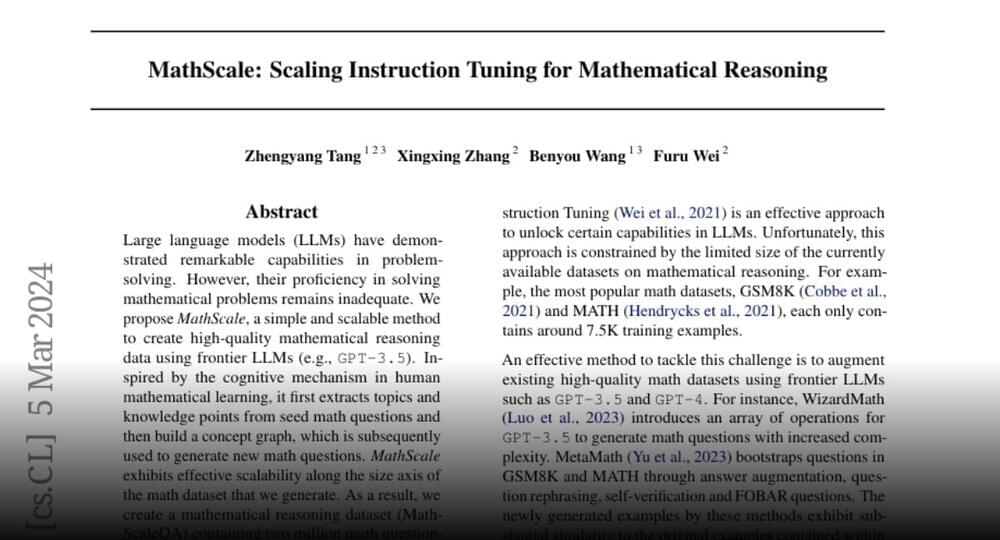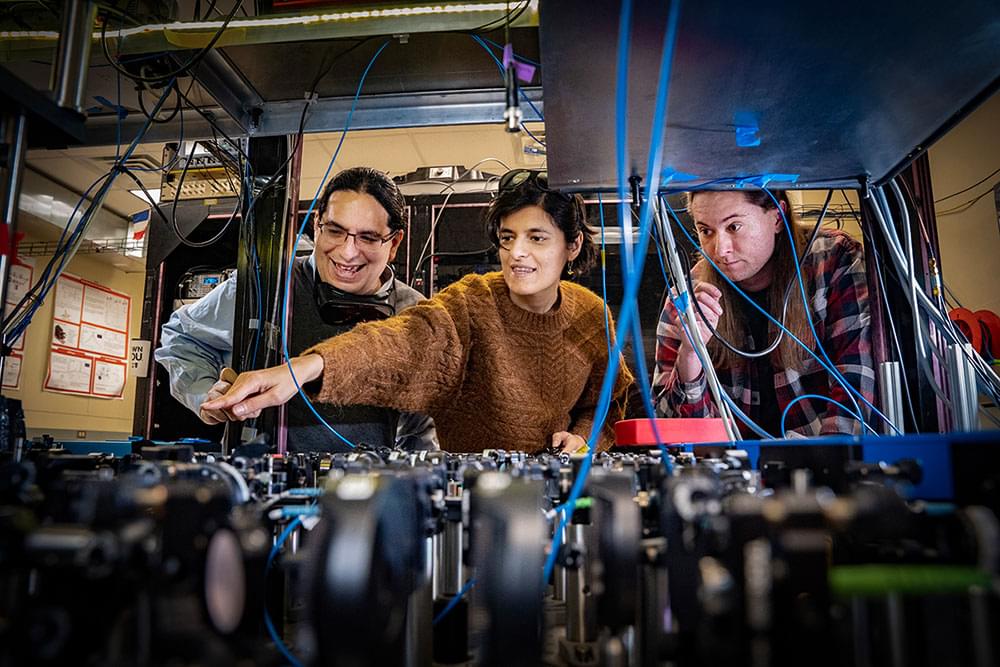At the heart of AI, matrix math has just seen its biggest boost “in more than a decade.”




A team of Stony Brook University physicists and their collaborators have taken a significant step toward the building of a quantum internet testbed by demonstrating a foundational quantum network measurement that employs room-temperature quantum memories. Their findings are described in a paper published in the Nature journal Quantum Information.
Research with quantum computing and quantum networks is taking place around the world in the hopes of developing a quantum internet, a network of quantum computers, sensors, and communication devices that will create, process, and transmit quantum states and entanglement. It is anticipated to enhance society’s internet system and provide certain services and securities that the current internet does not have.
The field of quantum information combines aspects of physics, mathematics, and classical computing to use quantum mechanics to solve complex problems much faster than classical computing and to transmit information in an unhackable manner. While the vision of a quantum internet system is growing and the field has seen a surge in interest from researchers and the public at large, accompanied by a steep increase in the capital invested, an actual quantum internet prototype has not been built.

Explore courses in mathematics, science, and computer science with Brilliant. First 200 to use our link https://brilliant.org/sabine will get 20% off the annual premium subscription.
Memory storage technology has come a long way from compact disks. Or has it? In a recent paper, scientists report they were able to fit petabytes of memory onto a compact disk using new laser technologies and advanced material design. Is this the future of data storage? Let’s have a look.
🤓 Check out my new quiz app ➜ http://quizwithit.com/
💌 Support me on Donatebox ➜ https://donorbox.org/swtg.
📝 Transcripts and written news on Substack ➜ https://sciencewtg.substack.com/
👉 Transcript with links to references on Patreon ➜ / sabine.
📩 Free weekly science newsletter ➜ https://sabinehossenfelder.com/newsle…
👂 Audio only podcast ➜ https://open.spotify.com/show/0MkNfXl…
🔗 Join this channel to get access to perks ➜
/ @sabinehossenfelder.
🖼️ On instagram ➜ / sciencewtg.
#science #sciencenews #technews #tech #technology
Draw a line between P and Q. That line will intersect the curve at a third point, R. (Mathematicians have a special trick for dealing with the case where the line doesn’t intersect the curve by adding a “point at infinity.”) The reflection of R across the x-axis is your sum P + Q. Together with this addition operation, all the solutions to the curve form a mathematical object called a group.
Mathematicians use this to define the “rank” of a curve. The rank of a curve relates to the number of rational solutions it has. Rank 0 curves have a finite number of solutions. Curves with higher rank have infinite numbers of solutions whose relationship to one another using the addition operation is described by the rank.
Ranks are not well understood; mathematicians don’t always have a way of computing them and don’t know how big they can get. (The largest exact rank known for a specific curve is 20.) Similar-looking curves can have completely different ranks.

Correcting 50-year-old errors in the math used to understand how electromagnetic waves scatter electrons trapped in Earth’s magnetic fields will lead to better protection for technology in space.
“The discovery of these errors will help scientists improve their models of artificial radiation belts produced by high-altitude nuclear explosions and how an event like that would impact our space technology,” said Greg Cunningham, a space scientist at Los Alamos National Laboratory. “This allows us to make better predictions of what that threat could be and the efficacy of radiation belt remediation strategies.”
Heliophysics models are important tools researchers use to understand phenomena around the Earth, such as how electrons can become trapped in the near-Earth space environment and damage electronics on space assets, or how Earth’s magnetic field shields us from both cosmic rays and particles in solar wind.

Gödel’s Incompleteness theorems are two theorems of mathematical logic that demonstrate the inherent limitations of every formal axiomatic system capable of modelling basic arithmetic.
The first incompleteness theorem: No consistent formal system capable of modelling basic arithmetic can be used to prove all truths about arithmetic.
In other words, no matter how complex a system of mathematics is, there will always be some statements about numbers that cannot be proved or disproved within the system.

Computing has already accelerated scientific discovery. Now scientists say a combination of advanced AI with next-generation cloud computing is turbocharging the pace of discovery to speeds unimaginable just a few years ago.
Microsoft and the Pacific Northwest National Laboratory (PNNL) in Richland, Washington, are collaborating to demonstrate how this acceleration can benefit chemistry and materials science – two scientific fields pivotal to finding energy solutions that the world needs.
Scientists at PNNL are testing a new battery material that was found in a matter of weeks, not years, as part of the collaboration with Microsoft to use to advanced AI and high-performance computing (HPC), a type of cloud-based computing that combines large numbers of computers to solve complex scientific and mathematical tasks.

At the end of the 20th century, analog systems in computer science have been widely replaced by digital systems due to their higher computing power. Nevertheless, the question keeps being intriguing until now: is the brain analog or digital? Initially, the latter has been favored, considering it as a Turing machine that works like a digital computer. However, more recently, digital and analog processes have been combined to implant human behavior in robots, endowing them with artificial intelligence (AI). Therefore, we think it is timely to compare mathematical models with the biology of computation in the brain. To this end, digital and analog processes clearly identified in cellular and molecular interactions in the Central Nervous System are highlighted. But above that, we try to pinpoint reasons distinguishing in silico computation from salient features of biological computation. First, genuinely analog information processing has been observed in electrical synapses and through gap junctions, the latter both in neurons and astrocytes. Apparently opposed to that, neuronal action potentials (APs) or spikes represent clearly digital events, like the yes/no or 1/0 of a Turing machine. However, spikes are rarely uniform, but can vary in amplitude and widths, which has significant, differential effects on transmitter release at the presynaptic terminal, where notwithstanding the quantal (vesicular) release itself is digital. Conversely, at the dendritic site of the postsynaptic neuron, there are numerous analog events of computation. Moreover, synaptic transmission of information is not only neuronal, but heavily influenced by astrocytes tightly ensheathing the majority of synapses in brain (tripartite synapse). At least at this point, LTP and LTD modifying synaptic plasticity and believed to induce short and long-term memory processes including consolidation (equivalent to RAM and ROM in electronic devices) have to be discussed. The present knowledge of how the brain stores and retrieves memories includes a variety of options (e.g., neuronal network oscillations, engram cells, astrocytic syncytium). Also epigenetic features play crucial roles in memory formation and its consolidation, which necessarily guides to molecular events like gene transcription and translation. In conclusion, brain computation is not only digital or analog, or a combination of both, but encompasses features in parallel, and of higher orders of complexity.
Keywords: analog-digital computation; artificial and biological intelligence; bifurcations; cellular computation; engrams; learning and memory; molecular computation; network oscillations.
Copyright © 2023 Gebicke-Haerter.